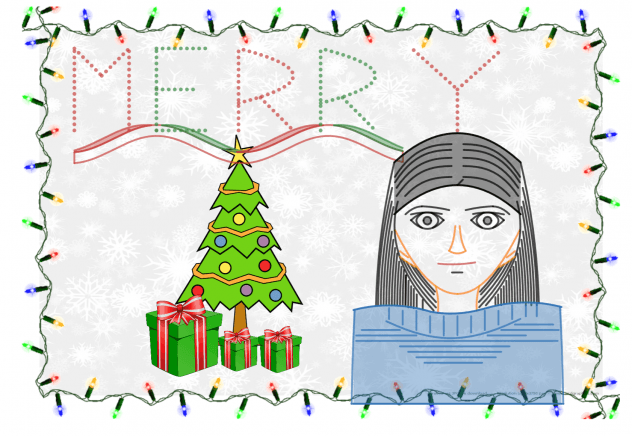Link to graph: https://www.desmos.com/calculator/xprr0sy3i5
This project improved my understanding of the types of functions we have studied this year.
When I started working on this project, it took me a while to figure out what functions I was going to use for every component of the card. I wasn’t sure how I was going to make may face from graphs and functions…
I started with the outline of my face which I found hard to do since my face is not just a circle. I also played around with stretches and reflections to find what look best. I ended up using quadratic functions with reflections on the y-axis to make my face look symmetrical. The eyes took me a long time to do. This is because I wanted them to have detail. I used quadratic and circle functions. When I was more than half way done with the eyes I noticed that they were to close together and they were a bit to small. So I had to go back and play around with the stretches. This wasn’t hard but it was a bit tedious. The lips took me a while since I didn’t know what functions to use. Then I figured simple is better so I used quadratic equations to make them. At this point I realized that I needed to do function notation and I had to go back and re-type everything, but it wasn’t that since I mainly just used the same equation multiple times. The hair was the hardest and most time consuming component of my portrait. This was because I wanted to make the hair “perfect”. I started out with the outline of my hair. I had a hard time using function notation for this, for some reason when I tried to use function notation desmos wouldn’t let me. Desmos kept notifying me that “there were to many variables” or “put notation is terms of (x,y)”. I was confused by this so I spend a lot of time looking up videos that could help me, but when I went back to desmos and tried to do it again it would notify me with the same thing. So for most of the hair folder I don’t have notations. I solved this big issue by coping and pasting the same equation and adding negative signs for reflections and I change the numbers a bit to do translations. This took a long time. When I tried to colour in my hair I had another big issue since some of my equations had notations while other didn’t. I tried using inequalities to shade this part in but had no way to it. So I shaded in what I could and left the rest. At the end since I couldn’t shade in some parts of my hair I decided to add multiple hair strands so it looked a bit more like my hair. I also did this so it doesn’t look incomplete. I used absolute value, square root, cubic functions to make my hair. I used the same equation many times but since I couldn’t use function notation I had to copy and paste and add negative signs for reflections and add translations. The ears were straight forward, I used quadratic functions. I didn’t know how help full quadratic equations were until this project. The nose was a bit tricky for me. This is because I try doing a realistic nose. But it didn’t work so I ended but using quadratic and log function. For my eyebrows and my neck I used quadratic functions. Then for my sweater I used sine, constant and reciprocal functions. I was happy that I could colour in this part since I had a hard time with my hair. At first I couldn’t figure out how to shade in but I asked my friends for help and it was surprisingly easy. When I was done with my portrait but I wanted to add some letters since all my friends had them.
The hardest part of this project was the domain and range restrictions. It was a good thing that Desmos displays a dot when there is an intersection between two graphs. I used this feature to help me get my graphs connected without overlapping them.
Overall, I believe that this project was helpful. This project made me remember some previous units. The one thing about this project that I found tedious was how time consuming it was. I wish I didn’t leave it to the last minute…

Leave a Reply